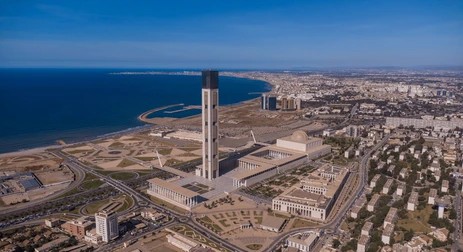At a Glance
- The Great Mosque of Algiers Tower stands 265 meters tall, redefining Algeria’s skyline.
- Built by China State Construction Engineering, it blends faith, culture, and innovation.
- The mosque hosts 120,000 worshippers, with a museum, library, and observation deck.
The Great Mosque of Algiers Tower, Africa’s tallest minaret and a defining symbol of Algeria’s modern identity is also the tallest minaret in the world, standing 265 meters high above the bay of Algiers is also known as Djamaa El-Djazaïr.
Completed after more than a decade of construction, the monumental structure has reshaped Algiers’ skyline and marked a milestone in Islamic architecture and North African engineering.
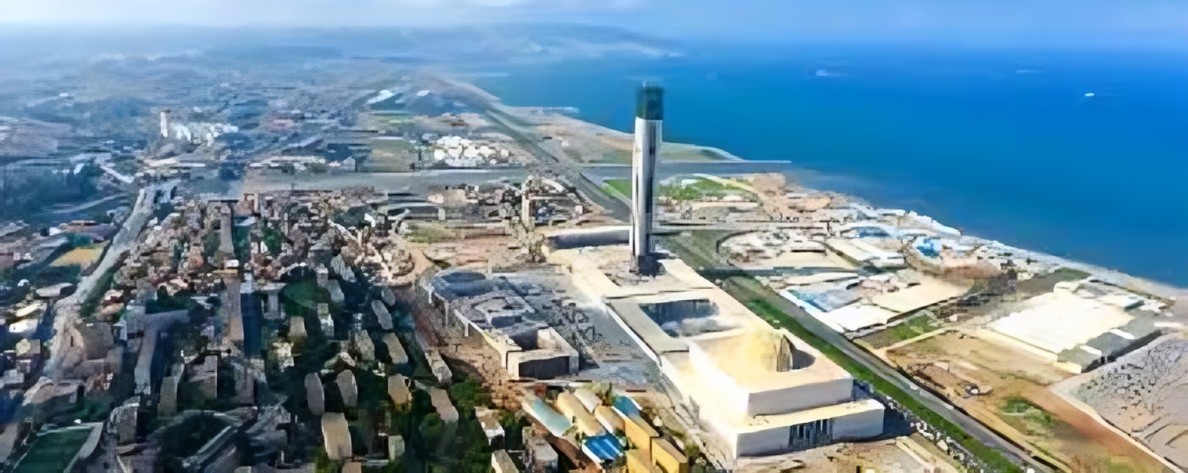
Monument of faith and ambition
Commissioned by the Algerian government and built by China State Construction Engineering Corporation (CSCEC), the Great Mosque of Algiers was inaugurated in February 2024 after years of delay.
The $900-million complex features a 265-meter minaret, an observation deck, a library for one million books, and a museum of Islamic art and history.
With capacity for 120,000 worshippers, the mosque is the largest in Africa and the third largest in the world, following Mecca’s Masjid al-Haram and Medina’s Al-Masjid an-Nabawi. Its design blends traditional Maghrebi motifs with minimalist modernism, symbolizing Algeria’s balance between heritage and progress.
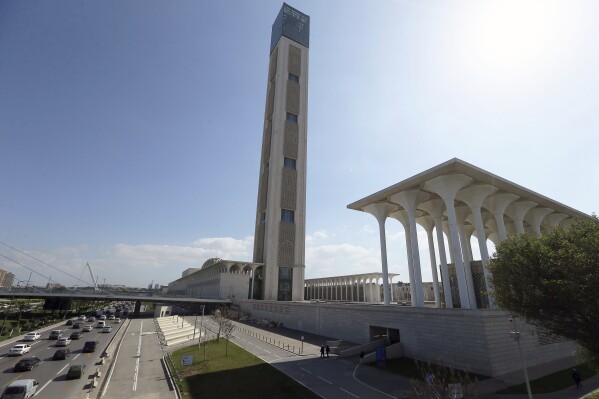
Engineering excellence meets architectural grace
Designed by KSP Jürgen Engel Architekten and Krebs+Kiefer International, the mosque’s minaret is not only a religious emblem but also a feat of modern engineering. The 37-story tower houses elevators, galleries, and a sky deck offering panoramic views of the capital and the Mediterranean coastline.
Built in a seismic-prone zone, the structure sits on deep foundations engineered to withstand earthquakes and coastal winds. The main prayer hall, capped by a 70-meter-wide dome, combines handcrafted tiles, calligraphy, and energy-efficient lighting systems, merging artistry with technical innovation.
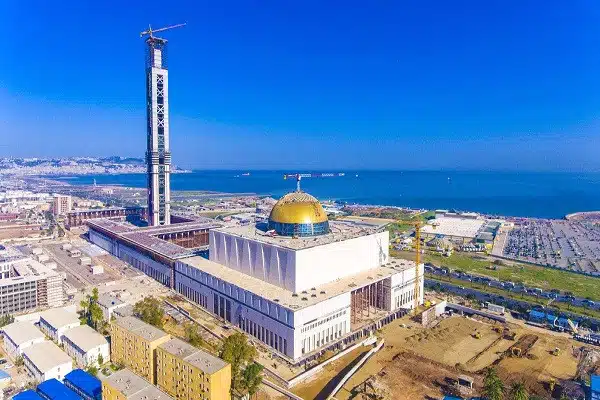
A cultural and political landmark
The Great Mosque of Algiers represents more than architecture; it reflects a national narrative of renewal and pride. Initiated under former President Abdelaziz Bouteflika, the project was intended as a legacy symbol of Islamic unity and Algerian strength.
Despite public debate over its cost and priorities, the mosque’s completion and opening have turned it into a focal point for religious tourism, scholarship, and civic identity. Its location along the coast positions it as both a spiritual beacon and an urban landmark visible from miles away.
Faith, tourism, and soft power
Beyond its religious function, the mosque anchors a new wave of cultural and educational tourism in Algeria. The adjoining library and museum are designed to host exhibitions, research programs, and interfaith dialogue, aligning with the country’s push to elevate Algiers as a cultural capital of the Mediterranean.
For China, which financed and built the complex, the project reinforces its growing infrastructure footprint in Africa — echoing similar partnerships seen in Egypt’s Iconic Tower and Nigeria’s railway modernization.
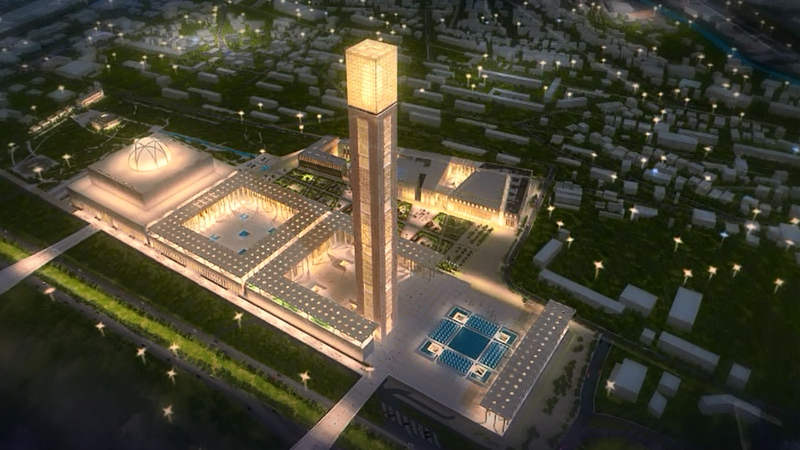
As Algeria continues to diversify its economy beyond hydrocarbons, the Great Mosque of Algiers Tower stands as both a spiritual edifice and a diplomatic statement — a towering emblem of national confidence, cultural revival, and architectural achievement.

